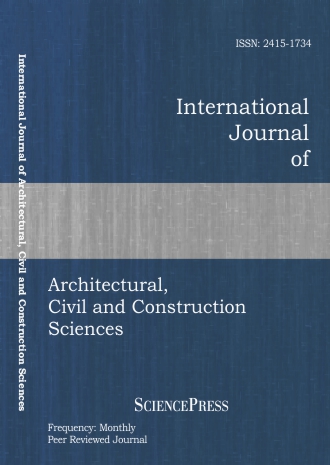
Scholarly
Volume:8, Issue: 9, 2014 Page No: 968 - 973
International Journal of Architectural, Civil and Construction Sciences
ISSN: 2415-1734
Physical, Chemical and Mineralogical Characterization of Construction and Demolition Waste Produced in Greece
Construction industry in Greece consumes annually
more than 25 million tons of natural aggregates originating mainly
from quarries. At the same time, more than 2 million tons of
construction and demolition waste are deposited every year, usually
without control, therefore increasing the environmental impact of this
sector. A potential alternative for saving natural resources and
minimize landfilling, could be the recycling and re-use of Concrete
and Demolition Waste (CDW) in concrete production. Moreover, in
order to conform to the European legislation, Greece is obliged to
recycle non-hazardous construction and demolition waste to a
minimum of 70% by 2020. In this paper characterization of recycled
materials - commercially and laboratory produced, coarse and fine,
Recycled Concrete Aggregates (RCA) - has been performed. Namely,
X-Ray Fluorescence and X-ray diffraction (XRD) analysis were used
for chemical and mineralogical analysis respectively. Physical
properties such as particle density, water absorption, sand equivalent
and resistance to fragmentation were also determined. This study,
first time made in Greece, aims at outlining the differences between
RCA and natural aggregates and evaluating their possible influence
in concrete performance. Results indicate that RCA’s chemical
composition is enriched in Si, Al, and alkali oxides compared to
natural aggregates. X-ray diffraction (XRD) analyses results
indicated the presence of calcite, quartz and minor peaks of mica and
feldspars. From all the evaluated physical properties of coarse RCA,
only water absorption and resistance to fragmentation seem to have a
direct influence on the properties of concrete. Low Sand Equivalent
and significantly high water absorption values indicate that fine
fractions of RCA cannot be used for concrete production unless
further processed. Chemical properties of RCA in terms of water
soluble ions are similar to those of natural aggregates. Four different
concrete mixtures were produced and examined, replacing natural
coarse aggregates with RCA by a ratio of 0%, 25%, 50% and 75%
respectively. Results indicate that concrete mixtures containing
recycled concrete aggregates have a minor deterioration of their
properties (3-9% lower compression strength at 28 days) compared to
conventional concrete containing the same cement quantity.